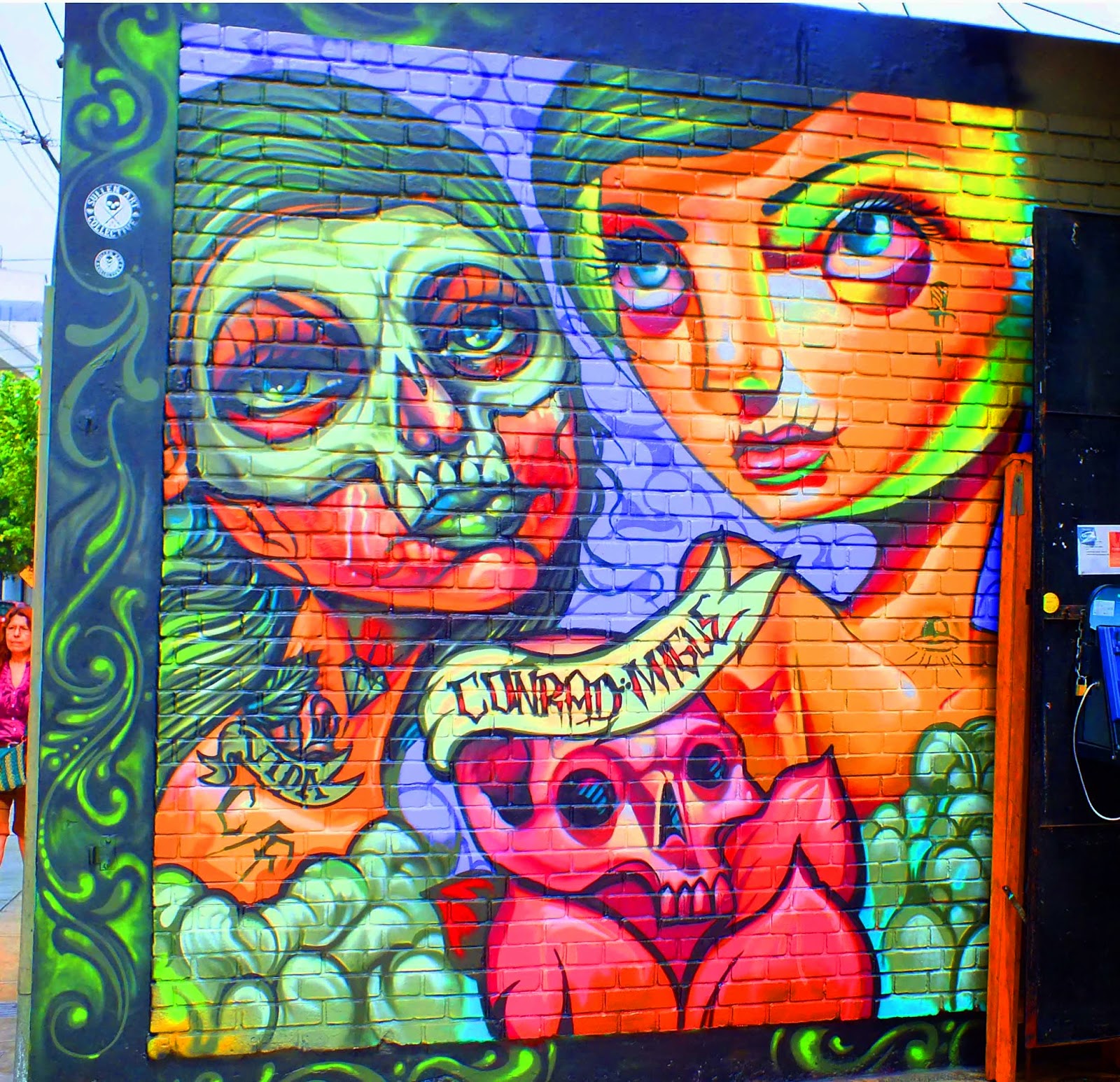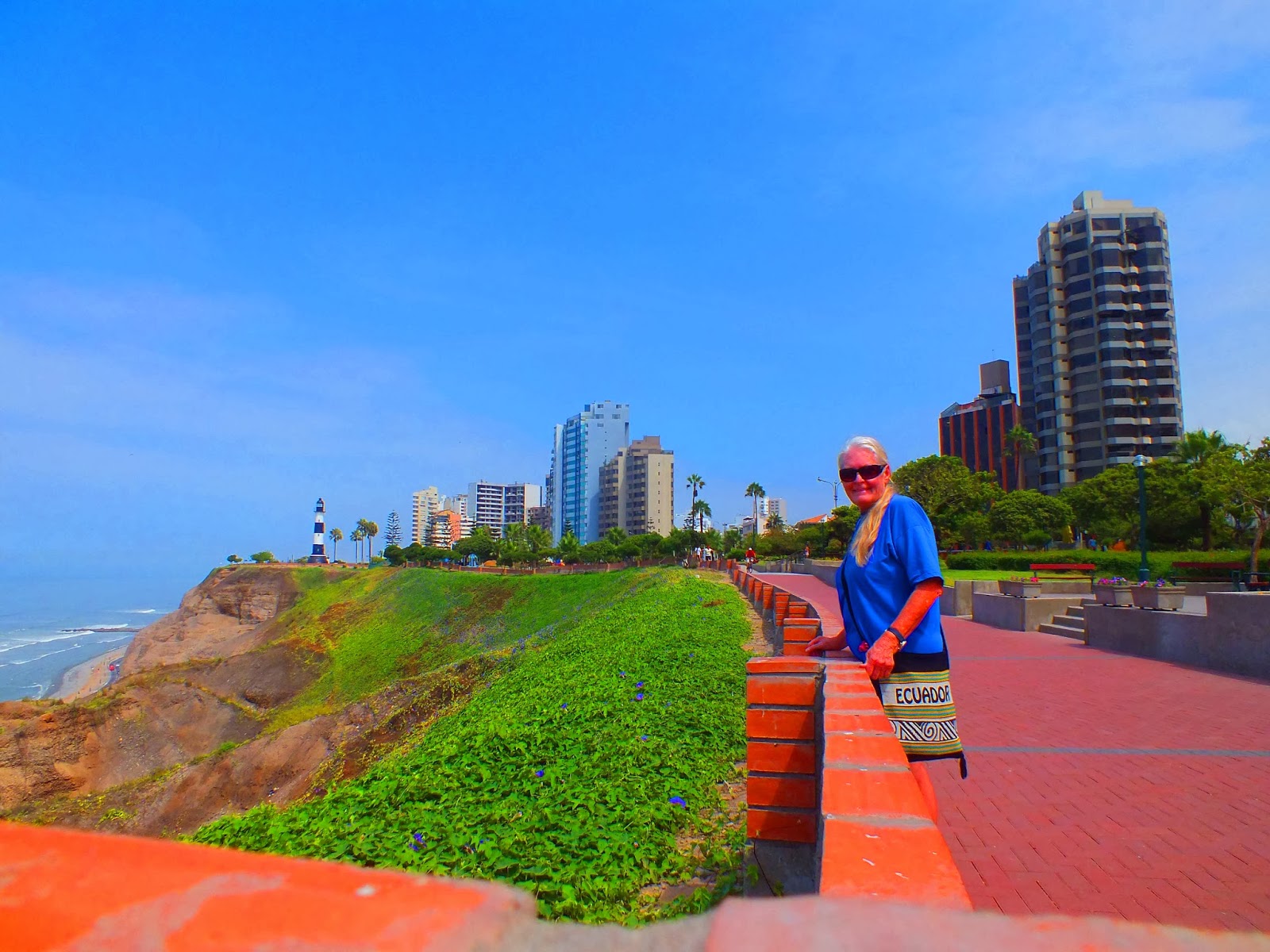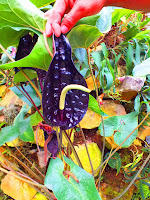
 On its surface, Lima is nothing of beauty; so far that is typical
for Peru. Lima like so many others is a sprawling desert city clinging
precariously to dusty cliffs; it spends much of the year marinated in an endless
fog that turns the sky the color of whitewashed walls. It is loud, disordered,
and gritty; much of its structure is cumbersome and gray. Foreign travelers tend
to just pass through on their way to more pastoral destinations in the Andes
and Amazon.
On its surface, Lima is nothing of beauty; so far that is typical
for Peru. Lima like so many others is a sprawling desert city clinging
precariously to dusty cliffs; it spends much of the year marinated in an endless
fog that turns the sky the color of whitewashed walls. It is loud, disordered,
and gritty; much of its structure is cumbersome and gray. Foreign travelers tend
to just pass through on their way to more pastoral destinations in the Andes
and Amazon.  Miraflores is now the cultural heart of Lima, just one of Lima’s
various districts, with much of the city's social and shopping scene set here. Central
Park is
one of the social centers of Miraflores, with many cafes, restaurants and
shops. On the coast, there is a modern shopping center and several upmarket
hotels. There are a number of tourist attractions in Miraflores, Inca Market that
houses several small shops run by the Inca people.
Miraflores is now the cultural heart of Lima, just one of Lima’s
various districts, with much of the city's social and shopping scene set here. Central
Park is
one of the social centers of Miraflores, with many cafes, restaurants and
shops. On the coast, there is a modern shopping center and several upmarket
hotels. There are a number of tourist attractions in Miraflores, Inca Market that
houses several small shops run by the Inca people.

Street crime here is closely controlled by police and the municipality on the streets but still with some level present (as in any metropolitan in the world). A particular police station only for tourists and visitors has been opened to provide a better service.

 Miraflores
combines traditional and popular influences, one of the reasons for Miraflores peculiar
charm and flair. Old houses coexist with modern multi-story buildings, hotels,
casinos and banks. You find traditional cafes and restaurants adjacent to modern
European style establishments or fast food chains, cultural institutions next
to discos and bars.
Miraflores
combines traditional and popular influences, one of the reasons for Miraflores peculiar
charm and flair. Old houses coexist with modern multi-story buildings, hotels,
casinos and banks. You find traditional cafes and restaurants adjacent to modern
European style establishments or fast food chains, cultural institutions next
to discos and bars.
It most definitely should be put on you’re to do list…






















